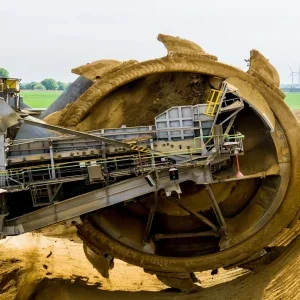Re-evaluation by RNI of previous exploration data from Doolgunna in the wake of the Monty drill intersection has identified a series of advanced copper-gold targets.
These targets are located within three geological corridors which are considered highly prospective for the development of copper-gold VHMS mineralising systems. The three VHMS corridors at Doolgunna represent a combined ~13 strike km of prospective stratigraphy.
Previous exploration by RNI across these three VHMS corridors has largely been limited to shallow testing, with most drilling less than 100m deep. In addition, surface electromagnetic survey work has been hindered by highly resistive surface conditions which limited penetration.
RNI is now evaluating drilling and exploration programs to test these priority target areas at Doolgunna, which remain subject to funding and approvals.
RNI Managing Director Royce McAuslane said the Monty massive sulphide discovery had shed new light on the exploration work carried out by RNI at Doolgunna and provided valuable new insight into the prospectivity of the project.
"The re-evaluation of the exploration work carried out at Doolgunna is producing some strong parallels with the Monty discovery and we are very excited about the prospect of a new mining province being established in this area," said Mr McAuslane.
A summary of each of the three prospective VHMS corridors at Doolgunna – and the advanced targets identified in each corridor – is provided below.
North Corridor
The North Corridor has a strike length of ~5kmand consists of a 500-800m thick succession ofmafic volcanic and sedimentary rocks. Anomalous copper and gold results have been identified in surface geochemical data and programs of targeted drilling. Previously reported drilling results include 1m @ 1.2% Cu and 18m @ 2.7g/t Au.
Within the datasets available, the Maguire-G2 Prospect has been identified as a high priority target within this corridor. Maguire-G2 consists of a discrete gravity anomaly located over a 250m strike length on a mafic volcanic-sedimentary rock contact that is coincident with a well-defined copper-gold geochemical anomaly.
Similarly, RNI notes that the Montymassive sulphide intersection is also located on themargin of a coincident gravity high and copper-gold geochemical anomaly.
Testing the Maguire-G2 target will require a deep reverse circulation drill hole to explain the source of the gravity anomaly combined with a high-powered down hole electromagnetic survey to identify any conductors that may be present in the immediate area.
In addition to the targeted exploration at Maguire-G2, a systematic programof regional aircore drilling is also warranted to provide comprehensive coverage of the North Corridor. This drilling would assist in defining the geology and identify horizons with prospective VHMS lithogeochemical signatures which could be targeted by deeper drilling or geophysical surveys.
Central Corridor
The Central Corridor has been identified as a ~3km trend interpreted to be the immediate strike extension of the horizon that is host to the Monty discovery intersection. Previous exploration over this area has been limited to surface geochemical sampling and a program of shallow RC drilling at the Marty’s Patch Prospect.
Results from this work revealed subdued and sporadic copper-gold anomalism in the surface geochemical data. Interestingly, drilling also intersectedmafic volcanic rocks that are coincident with more focused zones of gold.
RNI believes thiswarrants an exploration programincluding the collection ofmulti-element pathfinder assays from the existing drilling samples and drilling of a deep RC hole to test beneath the highly anomalous shallow drilling results and to identify key geological relationships. This hole would then also be used as a platform for a high powered DHEM survey. An extended regional aircore drilling program is also warranted across this target area.
South Corridor
The South Corridor covers a ~1km thick portion of the Narracoota Volcanics across a total strike length of ~5km. This sequence is now considered to be the stratigraphic equivalent to that at the Monty discovery. Exploration has been limited to surface geochemical sampling, two programs of shallow RC drilling, a single diamond hole and moving loop EM.
The geochemical sampling identified extensive coincident copper-gold anomalism across the South Corridor. The Ross Reef Prospect was targeted largely on the basis of gold values although copper values of up 100ppm were recorded in the soil data. The drilling delineated a 700m zone of anomalous copper with peak results of 605ppm, with a best intersection of 42m @ 420ppm copper. The diamond hole that was drilled to test this position intersected zones up to 3m thick containing fine veins of sulphides including chalcopyrite. These results are considered highly encouraging and potentially represent the top of a deeper mineralised system.
The geology of the South Corridor is poorly understood and RNI believes a systematic program of regional aircore drilling is warranted to provide comprehensive coverage. This drilling would help define the geology and identify horizons with prospective VHMS lithogeochemical signatures which could be targeted by deeper drilling or geophysical surveys.
As announced to the ASX on 22 June 2015, RNI has extended its option over 100% of the Doolgunna Project until 30 June 2016.






